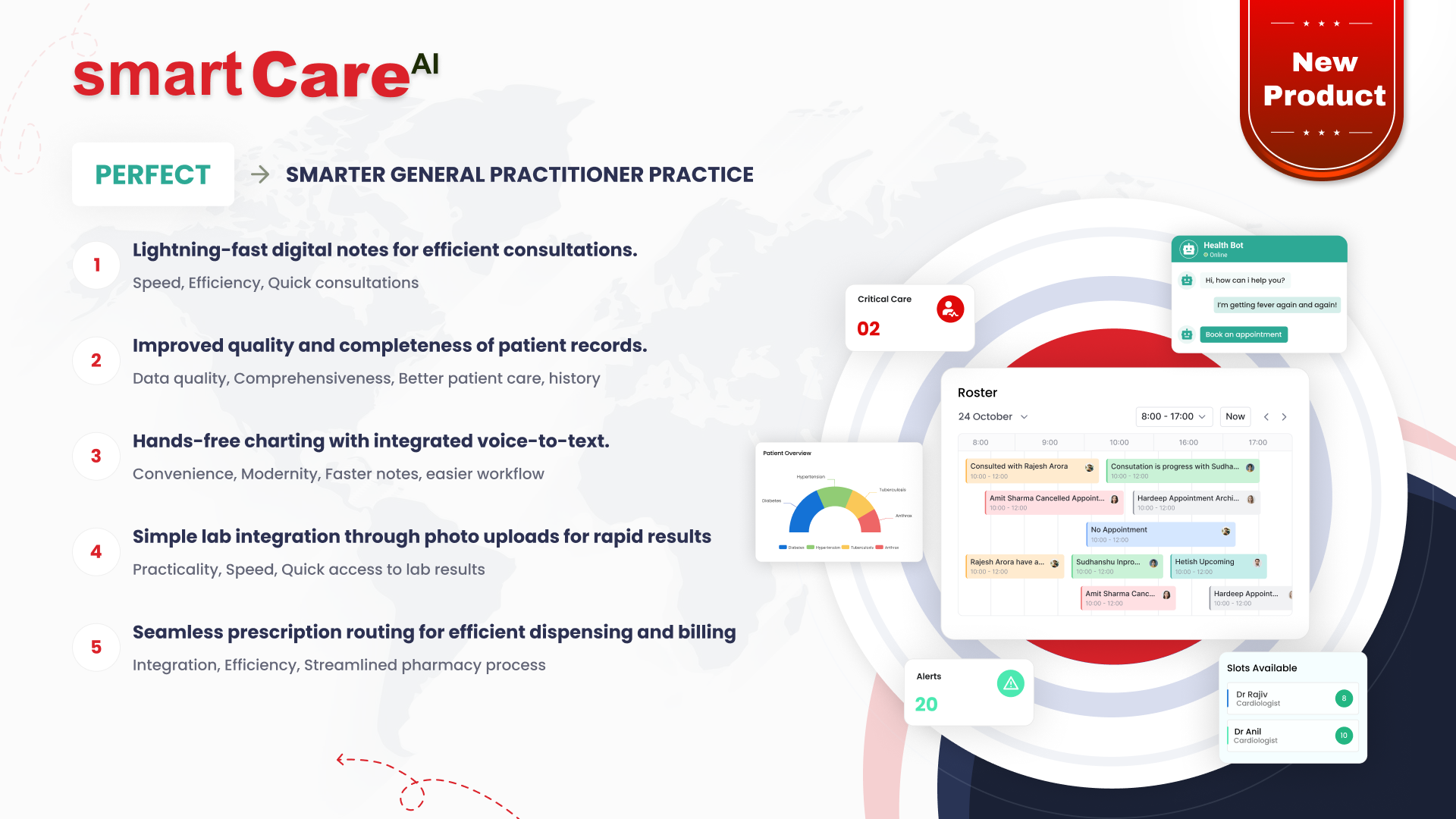
Posted On June 2, 2025
What Technologies Are Driving the Future of Digital Health Solutions
Digital health is evolving at a remarkable pace, reshaping how care is delivered, managed, and experienced. With growing demands for better accessibility, data security, and improved patient outcomes, healthcare providers are turning to modern technologies that promise not only efficiency but also long-term transformation. Let’s explore five key technologies shaping the future of digital health solutions.
AI and Machine Learning: Smarter Healthcare Starts Here
Artificial Intelligence (AI) and machine learning are leading the digital health revolution. From diagnostic support to personalised treatment plans, these technologies can analyse vast amounts of data to identify patterns, predict outcomes, and assist clinical decisions. For example, AI-powered imaging tools help radiologists detect anomalies with greater accuracy, while predictive models can flag patients at risk of chronic diseases.
The long-term benefit? Faster diagnoses, fewer errors, and data-backed decisions that improve patient care across the board.
How Cloud Computing Is Powering Digital Health Innovation
Cloud computing has become the backbone of scalable and secure digital health systems. It allows healthcare providers to store, share, and access patient data in real-time, improving collaboration across departments and facilities. With cloud-based platforms, healthcare organisations can also deploy software updates and security patches remotely, ensuring systems stay compliant and up-to-date.
Over time, cloud solutions offer lower infrastructure costs, better data recovery, and greater flexibility for growing healthcare networks.
The Role of IoT in Real-Time Health Monitoring
The Internet of Things (IoT) is enabling real-time, remote health monitoring like never before. Devices such as smartwatches, fitness trackers, and medical-grade wearables can continuously track vital signs and send alerts when irregularities are detected. For patients with chronic conditions, IoT devices provide peace of mind and allow clinicians to intervene early when needed.
This constant data flow not only supports preventative care but also reduces unnecessary hospital visits, making care more cost-effective and proactive.
Why Telemedicine Is More Than Just a Trend
While telemedicine gained momentum during the pandemic, it’s now a permanent fixture in healthcare delivery. Virtual consultations, remote diagnostics, and online prescriptions have made healthcare more accessible—especially for patients in rural or underserved areas. Telemedicine platforms now integrate seamlessly with EHR systems, giving providers a full view of patient history during online visits.
The continued adoption of telehealth is expected to reduce wait times, improve convenience, and enhance the patient experience overall.
Blockchain in Healthcare: A New Era of Data Security
Blockchain technology is revolutionising how sensitive health data is stored and shared. By creating secure, tamper-proof records, blockchain ensures transparency and traceability in healthcare transactions. It’s particularly valuable in maintaining accurate patient records, tracking the supply chain of medical goods, and verifying the authenticity of prescriptions.
As concerns about data privacy grow, blockchain provides a reliable solution to protect patient information while enabling faster and more secure exchanges across systems.
The Impact of Mobile Health Apps on Patient Engagement
Mobile health apps are changing the way patients interact with healthcare. Whether it’s tracking fitness, monitoring chronic conditions, or setting reminders for medication, these apps empower users to take control of their health in a more informed and consistent way. Healthcare providers are also using apps to share test results, send appointment notifications, and offer virtual consultations. This growing reliance on mobile tools is improving communication, increasing patient satisfaction, and helping deliver better outcomes over time.
How Big Data Is Shaping Healthcare Decisions
Healthcare generates an enormous amount of data every day — from electronic health records and wearable devices to lab tests and imaging. Big data analytics allows healthcare professionals to turn this information into valuable insights. By identifying patterns and predicting health trends, clinicians can make more accurate diagnoses and personalised treatment plans. Moreover, data-driven decisions can help hospitals optimise resources, reduce operational costs, and enhance the overall quality of care.
Wearable Tech: Transforming Patient Monitoring at Home
Wearable devices such as fitness bands, smartwatches, and biosensors are doing much more than tracking steps. They’re offering real-time insights into vital health metrics like heart rate, blood pressure, sleep quality, and glucose levels. These continuous streams of data provide doctors with a clearer picture of a patient’s health outside of clinical settings. For those managing chronic conditions or recovering from procedures, wearables are proving to be a game-changer in supporting remote care and early intervention.
Virtual and Augmented Reality in Medical Training and Treatment
Virtual reality (VR) and augmented reality (AR) are opening up new opportunities in healthcare education and patient care. Medical students and professionals can use VR to practise complex procedures in a risk-free environment. Surgeons can overlay AR images during operations for better precision. Even patients are benefiting — VR is being used for pain management, physical rehabilitation, and treating phobias. These immersive technologies are not only improving skills and confidence but also making treatment more engaging and effective.
How Interoperability Tools Are Making Healthcare Systems Smarter
One of the ongoing challenges in healthcare is the lack of smooth communication between different systems. Interoperability tools help bridge this gap by enabling secure data sharing across hospitals, clinics, labs, and pharmacies. This ensures that every care provider has access to accurate and up-to-date patient information, reducing errors and avoiding redundant tests. Smart integration tools also improve workflow efficiency and help create a more coordinated and seamless experience for both patients and providers.
Conclusion
The future of digital health solutions lies in the intelligent use of emerging technologies. AI, cloud computing, IoT, telemedicine, and blockchain are not just buzzwords—they are practical tools that are already driving improvements in efficiency, safety, and patient outcomes. As healthcare providers adapt to this digital shift, staying informed and agile will be key to delivering lasting value and better care.
For healthcare organisations looking to innovate with confidence, smartData Enterprises offers trusted solutions and expert guidance in building future-ready digital health platforms.
